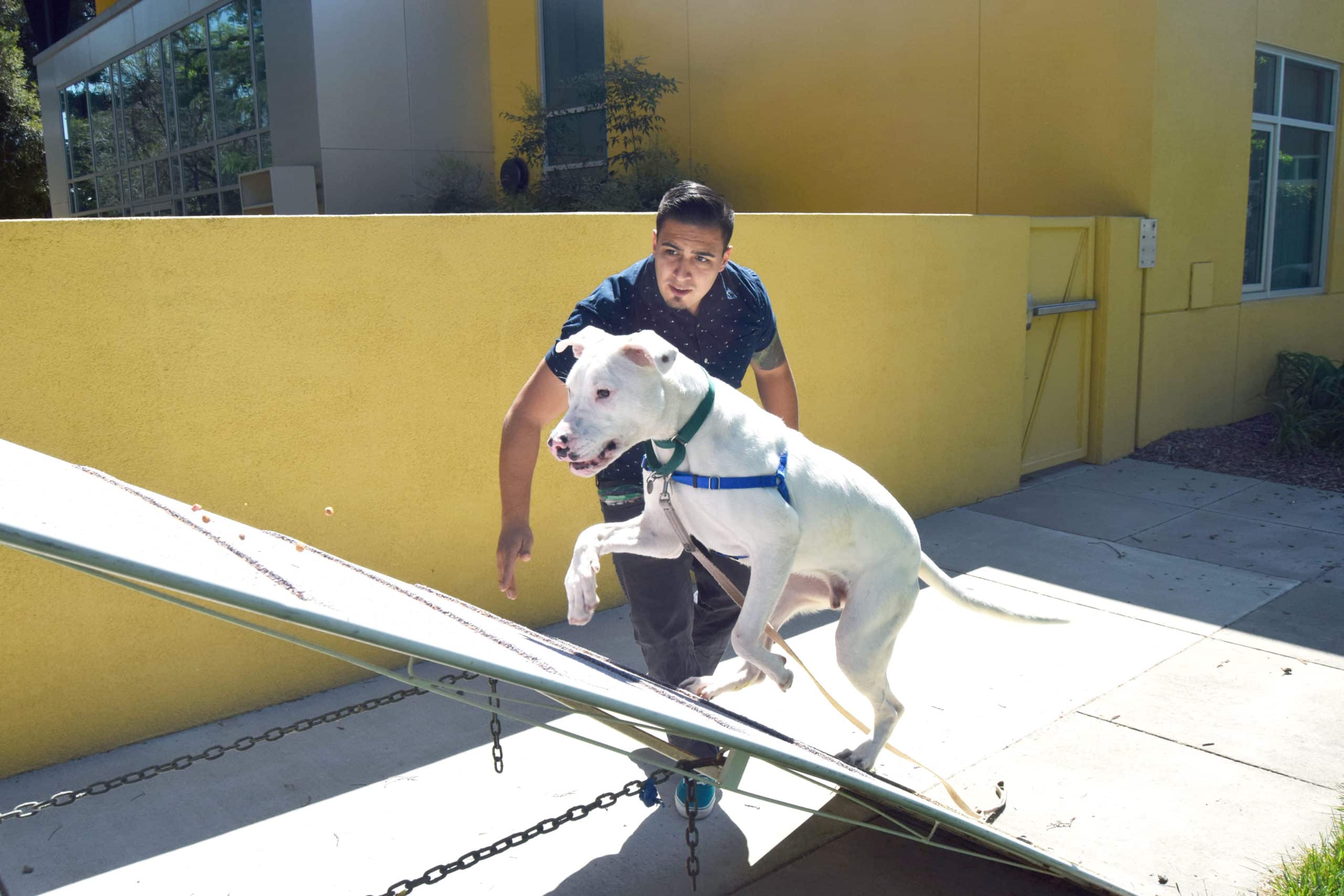This article is part of our series of informational tips for volunteer foster families.
Consider making a long-term difference through short-term care by signing up to foster animals in need.
“The way positive reinforcement is carried out is more important than the amount.”
– B.F. Skinner
Here at ARF, the method of training we use (for both dogs and cats) is called “positive reinforcement.” Positive reinforcement works by using praise and positive actions or rewards to increase desirable behaviors in animals (and humans). It makes those desirable behaviors more likely to occur in the future, and is one of the most powerful tools for shaping or changing an animal’s behavior.
We use positive reinforcement to help improve the adoptability of animals who may not have received much prior training. Dogs with good manners such as sit, down, waiting at doorways, and other behaviors we consider “polite,” are more likely to get adopted quickly, and are more likely to stay in their new home. Positive reinforcement also helps long-term animals to cope with shelter life by providing them with mental stimulation and enrichment designed to keep them behaviorally healthy during their stay at the shelter.

According to behaviorist B.F. Skinner, positive reinforcement is one of four types of operant conditioning:
- Positive reinforcement: a desirable stimulus is introduced to encourage certain behavior.
- Positive punishment: an undesirable stimulus is introduced to discourage the behavior.
- Negative reinforcement: an undesirable stimulus is removed to encourage the behavior.
- Negative punishment: a desirable stimulus is removed to discourage the behavior.
Positive reinforcement may include food treats, praise, petting, or a favorite toy or game. Food treats are one of the most convenient ways to provide rewards to reinforce good behavior. Small pieces of soft commercial treats, hot dogs, cheese, or cooked chicken are all available for this purpose. You may need to experiment to determine if the dog you are working with is particular about which treats they prefer. If you volunteer on-site at ARF, we encourage you to make a regular practice of wearing a bait bag or apron during every shift with dogs, so that you can keep tasty treats handy. Each time you use a food reward, you should precede the food reward with a verbal marker like, “Yes!” or “Good!”.



